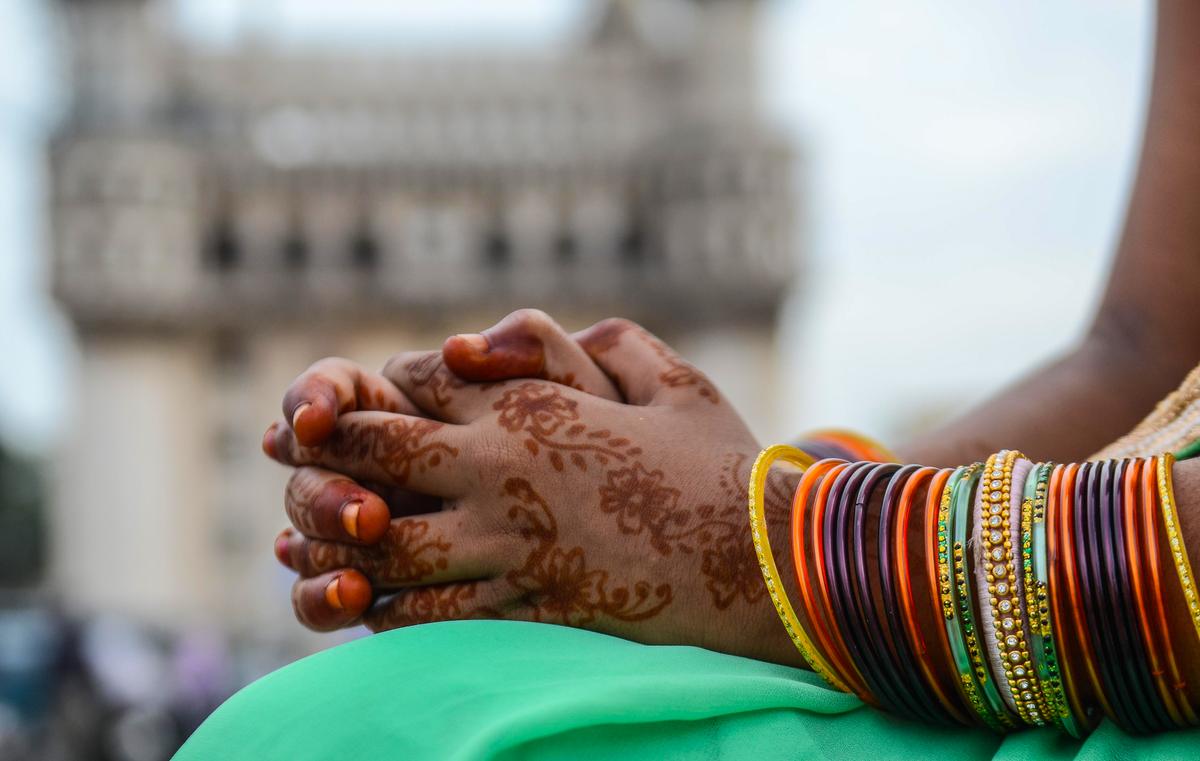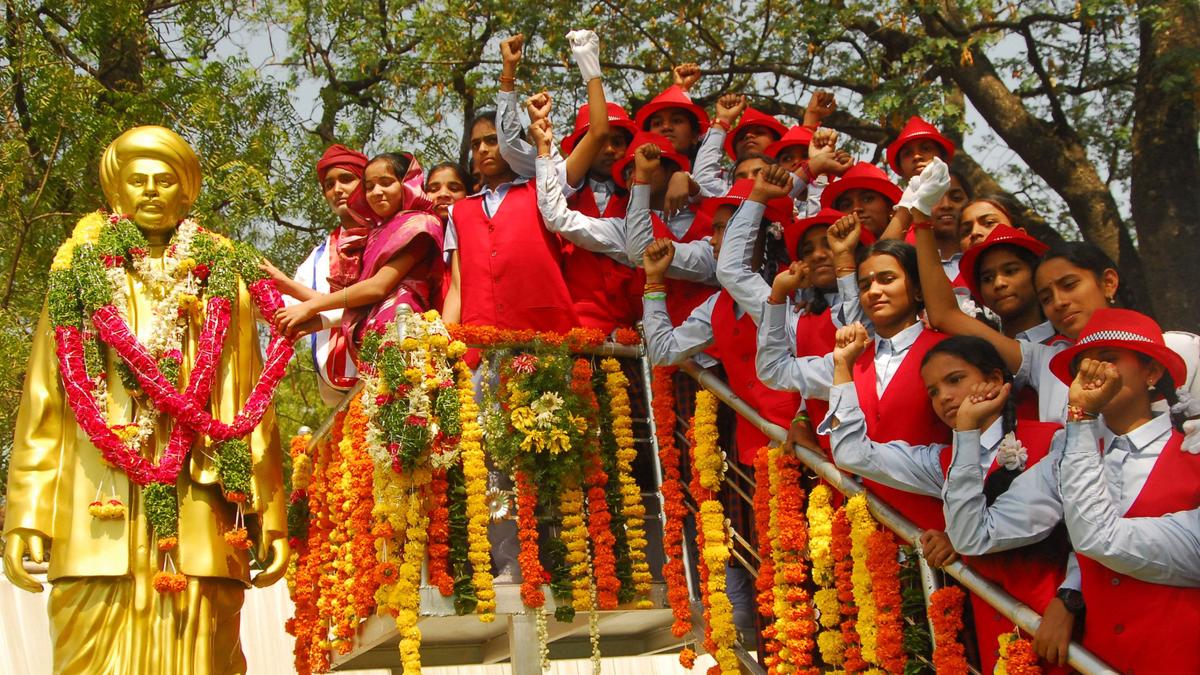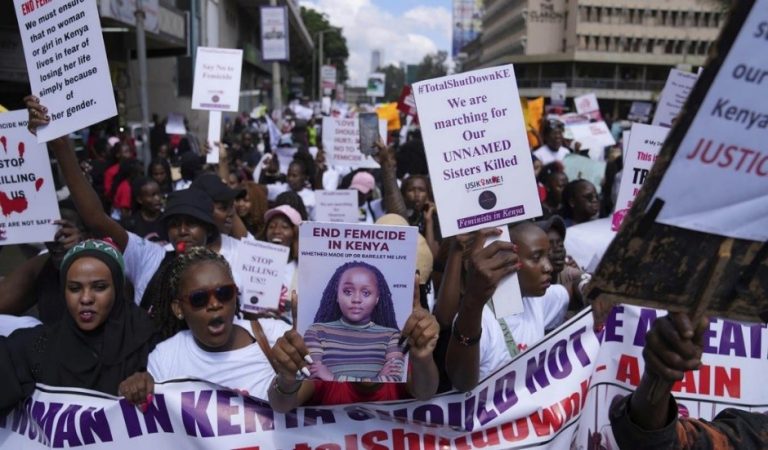UNESCO Global Education Report 2025
- 29 Oct 2025
In News:
The UNESCO Global Education Report 2025 offers a critical evaluation of global progress toward gender equality in education, exposing persistent disparities despite decades of international commitments. Although substantial improvements have been recorded since the 1995 Beijing Declaration, an alarming 133 million girls worldwide remain out of school, signalling unfinished global obligations.
Progress Achieved
- The report highlights significant gains in enrolment and access. Compared to 1995, 91 million more girls are in primary school and 136 million more are enrolled in secondary education.
- Tertiary education has witnessed the most dramatic progress, with women's enrolment tripling from 41 million to 139 million. These trends reflect global investments in universal education programmes, gender inclusion policies, and financial support mechanisms.
Regional Variations
Despite overall progress, regional disparities persist. Central and South Asia have achieved gender parity in secondary education, demonstrating effective policy interventions. Conversely, Sub-Saharan Africa and Oceania continue to lag, constrained by poverty, rural isolation, armed conflicts, and socio-cultural restrictions. In countries such as Mali and Guinea, lower secondary completion rates for girls remain below 20%, indicating severe structural inequities. In contrast, Latin America and the Caribbean show higher dropout rates among boys, underscoring region-specific challenges.
Quality and Inclusivity Deficits
The report stresses that enrolment gains alone do not translate into gender equality. Only two-thirds of countries have compulsory sexuality education at the primary level, and gender biases persist in textbooks and curricula. These embedded stereotypes perpetuate discriminatory norms and restrict girls’ aspirations and subject choices. Safety concerns—including school-related gender-based violence—further hinder learning continuity, particularly for adolescent girls.
Leadership Inequality
Although women comprise a significant proportion of the global teaching workforce, their presence in leadership positions remains limited. Only 30% of higher education leadership roles are held by women, revealing systemic barriers such as limited institutional support, leadership pipelines, and entrenched patriarchal structures. This leadership gap undermines gender-sensitive decision-making within education systems.
Economic and Social Implications
UNESCO reinforces that girls’ education is not merely a human rights imperative but an economic and socio-developmental necessity. The World Bank (2024) estimates that closing the gender gap in education could boost global GDP by $15–30 trillion, reflecting the massive economic potential of women’s participation in the workforce. Educated girls contribute to improved health outcomes, reduced poverty, enhanced labour force participation, and greater intergenerational development.
Way Forward
The report calls for gender-transformative policies—including equitable curricula, strengthened pathways for women in leadership, expanded sexuality education, safer learning environments, and evidence-based monitoring. Achieving the vision of the Beijing Declaration requires political will, sustained investments, and community-level engagement to dismantle structural barriers.
Sharp Decline in Child Marriages in India

- 09 Oct 2025
In News:
A recent survey by Just Rights for Children (JRC), a coalition of over 250 child protection NGOs, has reported a significant decline in child marriages across India. The trend underscores that legal enforcement, community engagement, and multi-sectoral collaboration can collectively transform entrenched social practices that violate children’s rights.
Significance of the Decline
- Human Rights Perspective: Child marriage undermines the fundamental rights of children—particularly girls—to education, health, and personal autonomy. Its reduction reflects progress toward SDG-5 (Gender Equality) and India’s commitments under the UN Convention on the Rights of the Child (UNCRC).
- Health and Demographic Gains: Early marriages often precipitate early pregnancies, increasing risks of maternal mortality, low birth weight, and malnutrition. Delaying marriage improves reproductive health and supports demographic stability by spacing births.
- Educational and Economic Empowerment: Girls who remain in school gain greater social mobility and earning potential. Extended education creates a multiplier effect, reducing inter-generational poverty and enhancing overall human capital.
- Social Norms Transformation: The steep decline challenges the perception that child marriage is inevitable, showing that communities respond to visible enforcement and positive examples of girls pursuing education.
Key Survey Findings
- Assam recorded the highest decline (84%), followed by Maharashtra and Bihar (70% each), Rajasthan (66%), and Karnataka (55%).
- While three children were married every minute during 2019–21, by 2025, only three cases per day were reported.
- Awareness of the Bal Vivah Mukt Bharat campaign reached 99% of respondents.
- In 31% of surveyed villages, all girls aged 6–18 attended school, although Bihar lagged behind.
- Poverty (91%) and safety concerns (44%) remain major drivers of child marriage.
Drivers of the Decline
- Legal Deterrence: Enforcement under the Prohibition of Child Marriage Act, 2006—FIRs and arrests—proved highly effective. Assam’s proactive approach set a national benchmark.
- Awareness Campaigns: Nationwide outreach through schools, media, and Panchayats via Bal Vivah Mukt Bharat fostered community ownership over child rights.
- Community-Based Mechanisms: Karnataka employed helplines and Child Welfare Committees (CWCs), while empowering Panchayat Development Officers to register marriages, preventing around 2,000 child marriages in 2021.
- Multi-Sectoral Collaboration: Integration of legal, social, and economic interventions through state governments, police, education departments, and civil society reinforced enforcement and awareness.
Remaining Challenges
- Under-reporting and hidden marriages, especially in rural and tribal regions.
- Entrenched social norms linked to caste, honour, and family prestige.
- Economic vulnerability, which still drives early marriages in poor households.
- Institutional capacity gaps, including inadequate training and resources for frontline workers.
- Need for robust data to ensure reported progress reflects reality.
Policy Recommendations
- Mandatory Marriage Registration linked with Aadhaar and education databases.
- Targeted Social Protection, expanding schemes like Kanyashree and conditional cash transfers to encourage education and delayed marriage.
- Education and Safety Measures, including improved school infrastructure, transport, and security for girls.
- Grassroots Empowerment, strengthening Panchayats, CWCs, and helplines for early detection.
- Normative Change, involving mass communication, role models, and religious/community leaders.
- Monitoring and Evaluation, through third-party audits, longitudinal surveys, and state dashboards.
Conclusion
India’s decline in child marriages is a landmark achievement in rights-based social reform. The country must now aim to reduce prevalence below 5% by 2030, aligning with the UN Sustainable Development Goals, thereby ensuring that every child’s future is determined by choice, education, and opportunity, rather than compulsion.
Protection of Civil Rights (PCR) Act

- 18 Jul 2025
Context:
The Protection of Civil Rights (PCR) Act, 1955, a legislative tool to eliminate untouchability as mandated under Article 17 of the Indian Constitution, remains grossly under-implemented. The 2022 report by the Ministry of Social Justice and Empowerment paints a dismal picture of enforcement, revealing structural deficiencies in India's pursuit of social justice, cultural preservation, and inclusive development.
Despite the Act’s objective of eradicating untouchability—manifested in denial of access to public spaces, religious institutions, and essential services—there has been a sharp decline in First Information Reports (FIRs) over the years. Only 13 cases were registered in 2022, compared to 24 in 2021 and 25 in 2020. Alarmingly, no State or Union Territory has declared any area as “untouchability-prone,” raising concerns over administrative apathy and underreporting.
The judicial and police response has been equally lackluster. Out of 1,242 cases pending trial under the PCR Act in 2022, over 97% remain unresolved. Out of 31 cases disposed that year, 30 ended in acquittal, with only one conviction, reflecting a near-total failure in ensuring accountability. Similarly, of the 51 cases pending with police, chargesheets were filed in just 12. This highlights serious procedural and evidentiary lapses, lack of capacity, and perhaps, implicit biases in law enforcement and judicial systems.
In contrast, cases under the Scheduled Castes and Scheduled Tribes (Prevention of Atrocities) Act, 1989 (PoA Act) have shown an increasing trend, suggesting better awareness and enforcement. This disparity calls for equal policy attention to the PCR Act, especially considering its centrality in upholding the constitutional promise of equality and dignity.
What makes the findings even more concerning is their impact on India’s cultural and linguistic diversity. Many communities that are victims of untouchability also belong to linguistic or tribal minorities. These include speakers of endangered languages, regional dialects, and culturally distinct groups. The systemic neglect of untouchability cases undermines not just civil rights but also the preservation of traditional knowledge systems, oral histories, and linguistic secularism enshrined in Article 29 of the Constitution.
The absence of proactive policy measures—such as identification of vulnerable zones, awareness programs, legal aid, or cultural inclusion initiatives—threatens the composite culture of the nation. Moreover, the decline in registration indicates a lack of trust in legal redressal mechanisms and failure to empower marginalized communities through effective grievance redressal.
To address these challenges, a multi-pronged strategy is essential. This includes:
- Strengthening special courts and fast-tracking trials under the PCR Act.
- Capacity-building and sensitization programs for police and judiciary.
- Empowering local governance institutions to report and act on untouchability practices.
- Implementing UNESCO-backed initiatives to preserve linguistic heritage.
- Introducing language training and interpretation services to reduce communication gaps.
- Leveraging multilingual education policies to integrate cognitive development with cultural preservation.
In conclusion, the declining efficacy of the PCR Act undermines India's constitutional ethos of equality, fraternity, and cultural integration. A robust, inclusive, and culturally sensitive legal framework is imperative to protect the rights of the marginalized and to uphold the pluralistic spirit of the Indian nation.
Jyotiba Phule: Pioneer of Social Justice and Emancipation

- 13 Apr 2025
Introduction:
Jyotiba Phule (1827–1890) stands out as one of the foremost social reformers of 19th-century India, whose contributions to education, caste reform, women's rights, and rationalist thought continue to influence contemporary debates on social justice.
Born into the Mali casteinMaharashtra, Phule’s awakening began in 1848 after facing caste-based humiliation at a Brahmin wedding. That same year, inspired by Cynthia Farrar (a Christian missionary) and rationalist Thomas Paine, he and his wife Savitribai Phule established India’s first school for girls. By 1851, they had opened 18 schools, and later, night schools for workers and women—challenging both gender and caste hierarchies in education.
Phule’s activism extended beyond education. In 1873, he founded the SatyashodhakSamaj (Society of Truth Seekers), an organization aimed at eradicating caste-based oppression and challenging Brahminical dominance. His work Gulamgiri (Slavery) (published in 1873) likened the condition of Dalits and Shudras to that of African-American slaves, emphasizing systemic subjugation through religious orthodoxy.
Phule argued for compulsory primary education, particularly for the rural poor. In his Statement to the Education Commission, he recommended scholarships, annual prizes, and mandatory schooling up to age 12, noting that agricultural poverty kept children away from education.
In his agrarian treatise ShetkaryancheAsud (Farmer’s Whip), Phule proposed:
- Employing army personnel in public works like dams and bunds.
- Returning village pasture lands from the Forest Department.
- Importing cattle for meat to preserve draught animals crucial to agriculture.
These proposals reflected his commitment to economic upliftment of farmers and sustainable agricultural practices.
Phule’s spiritual views evolved toward rational humanism. Though he respected the equality-based ethics in Islam and Christianity, his final philosophical work, Sarvajanik Satya Dharma Pustak, rejected all sectarian religious texts and called for a universal spiritual order. He questioned caste sanctity, ridiculed the notion of sacred superiority, and criticized the irrationalities in scriptural justifications.
He strongly supported women’s rights, defended PanditaRamabai’s conversion, and denounced polygamy, arguing for gender parity in both religious and social spheres. He wrote, “How would men feel if women married more than one man?”
Despite opposition from Bal Gangadhar Tilak and orthodox Hindu nationalists, Phule remained focused on uplifting the oppressed, even bailing Tilak out of jail at one point—illustrating his commitment to justice over personal differences.
Phule’s legacy remains crucial in modern India’s quest for social equity. His efforts to democratize education, dismantle caste, and promote inclusive governance laid the groundwork for India's later constitutional and social reforms.
Child Sexual Abuse in India
- 31 May 2025
Context:
A landmark global study published in The Lancet has brought to light the disturbing scale of child sexual abuse (CSA) worldwide. Using data from 204 countries (1990–2023), the study by the Institute for Health Metrics and Evaluation found that 18.9% of women and 14.8% of men globally were victims of CSA. In India, 30.8% of women and 13.5% of men reported having experienced sexual violence before turning 18, placing it among the countries with the highest prevalence for women.
The research revealed that most abuse begins in childhood, with 67% of girls and 72% of boys facing their first abuse before 18. A staggering 26.9% of Indian women and 9.4% of men aged 20–24 continue to report having been abused during their childhood, indicating the persistence of this crisis.
Context and Contributing Factors
CSA in India is exacerbated by societal stigma, patriarchal norms, and underreporting, particularly among boys. Male survivors face additional silence due to entrenched ideas of masculinity and victim-blaming. Abuse often occurs in familiar settings, including homes and schools, with digital exploitation emerging as a growing threat.
Furthermore, regional disparities persist. Urban areas report more digital abuse, while rural areas suffer from familial exploitation compounded by lack of awareness and legal access. States like Kerala and Maharashtra show better reporting, while Bihar and Uttar Pradesh lag.
Legal and Institutional Response
India enacted the Protection of Children from Sexual Offences (POCSO) Act in 2012, a gender-neutral law covering a wide range of sexual offences with child-friendly procedures. However, implementation gaps remain:
- Conviction rates below 30%
- Backlogged trials
- Insufficient training for police and judiciary
Additionally, mental health services for survivors are scarce, and sex education in schools remains inadequate, leaving children vulnerable and uninformed.
Civil Society and Global Comparisons
NGOs such as Save the Children, Kailash Satyarthi Children’s Foundation, and HAQ have played key roles in rehabilitation and awareness. International best practices offer valuable lessons:
- Nordic countries integrate mandatory sex education.
- Australia uses public awareness and national offender registries.
Recommendations and Way Forward
A multisectoral, prevention-focused approach is vital:
- Legal Reforms
- Fast-track POCSO courts
- Child-friendly police units
- Sensitisation training for frontline staff
- Education System Overhaul
- Include modules on “safe/unsafe touch” and digital safety
- Train teachers to detect and report CSA
- Community Engagement
- Empower Panchayats and child welfare committees
- Conduct grassroots campaigns to break the culture of silence
- Technological Safeguards
- Strengthen helplines like Childline 1098
- Collaborate with tech platforms for safer digital ecosystems
- Research and Data Collection
- Create a national CSA data repository
- Promote evidence-based policymaking through academic and NGO partnerships
Conclusion
The Lancet study underscores that CSA is not merely a criminal issue—it is a public health and social emergency. Laws like POCSO, while crucial, are not enough. What is needed is a coordinated, empathetic, and data-driven strategy that spans homes, schools, communities, and cyberspace. Only then can India safeguard its children not just from predators, but from institutional neglect and societal apathy.
UN Women’s Report 2025

- 12 Mar 2025
Context:
Marking the 30th anniversary of the Beijing Declaration and Platform for Action (1995)—a landmark global framework for achieving gender equality—the UN Women’s Report 2025 presents a sobering assessment of the status of women’s rights worldwide. Released ahead of International Women’s Day 2025, the report reflects a disturbing pattern: while there has been measurable progress, recent years have witnessed an alarming backlash against gender equality in many parts of the world.
Key Findings
- Backsliding of Women’s Rights: Nearly one in four countries reported a backlash against women’s rights, often linked to democratic erosion and rise of authoritarian or conservative forces. The report warns of "anti-rights actors" systematically working to undermine legal and policy gains made over decades.
- Escalation in Gender-Based Violence
The world continues to grapple with high levels of violence against women:
-
- A woman or girl is killed every 10 minutes by an intimate partner or family member.
- Conflict-related sexual violence has risen 50% since 2022, with 95% of victims being women and girls.
These trends point to both persistent patriarchal norms and the failure of protective systems, especially in conflict and humanitarian settings.
- Legal and Political Disempowerment
Despite notable legislative progress:
- Women globally have only 64% of the legal rights enjoyed by men.
- Only 87 countries have ever had a female head of state.
- Women occupy just 26% of parliamentary seats, even though this figure has doubled since 1995.
These gaps reflect the structural barriers and gender biases embedded in political systems and governance.
- Economic and Health Inequities
- 10% of women and girls live in extreme poverty.
- Young women (ages 15–24) face limited access to family planning, impacting health and autonomy.
- Maternal mortality has remained stagnant since 2015, reflecting uneven healthcare access.
Positive Developments
Despite the challenges, there are signs of progress:
- 88% of countries now have laws against violence towards women.
- Most countries have banned workplace discrimination.
- 44% of countries are working to improve education and training for women.
- Female legislative representation has more than doubled since 1995.
UN Women’s Roadmap for Gender Equality (2030)
To address setbacks and accelerate progress, the report outlines a five-pronged strategy:
- Digital Inclusion – Ensure equitable access to digital technologies.
- Social Protection – Invest in universal healthcare, education, and safety nets.
- Zero Gender-Based Violence – Strengthen laws, services, and public awareness.
- Equal Decision-Making – Promote women's leadership in all sectors.
- Gender-Sensitive Crisis Response – Integrate gender priorities in humanitarian aid.
Conclusion
The UN Women’s Report 2025 underscores a critical paradox: legal and policy advancements coexist with deep-rooted inequalities and growing resistance to gender justice. As UN Secretary-General António Guterres aptly noted, “Instead of mainstreaming equal rights, we’re seeing the mainstreaming of misogyny.” Achieving SDG 5 (Gender Equality) by 2030 demands sustained political will, democratic resilience, and transformative reforms. For India and the global community, this is both a warning and an opportunity—to reaffirm their commitment to gender justice and inclusive development.
